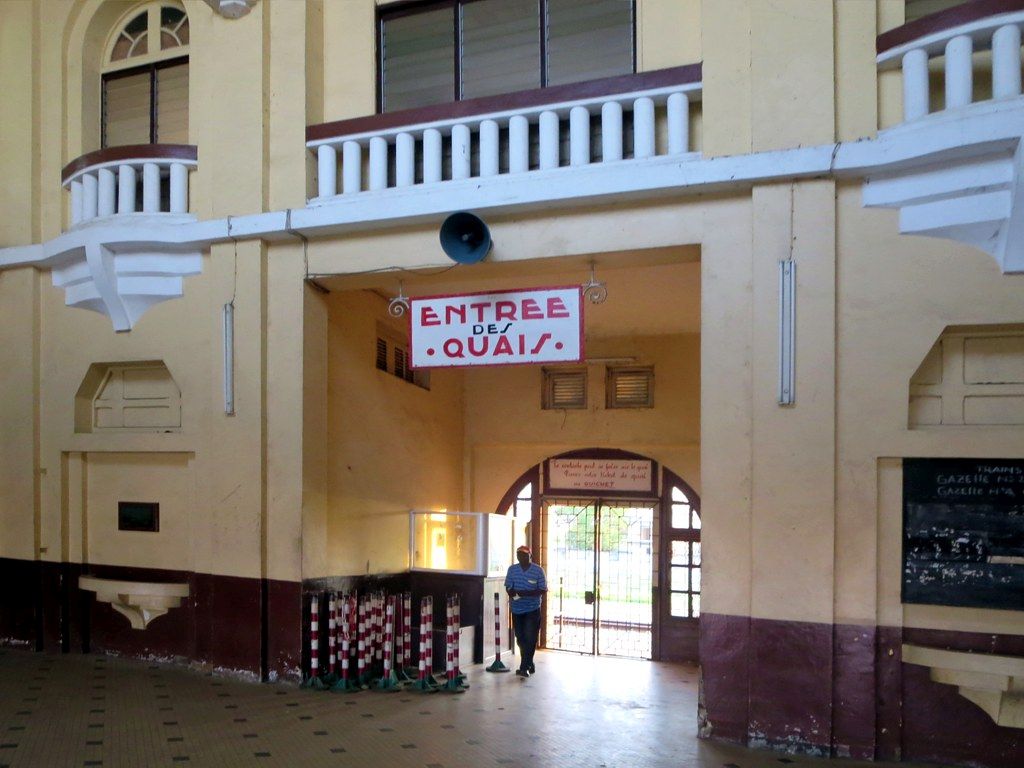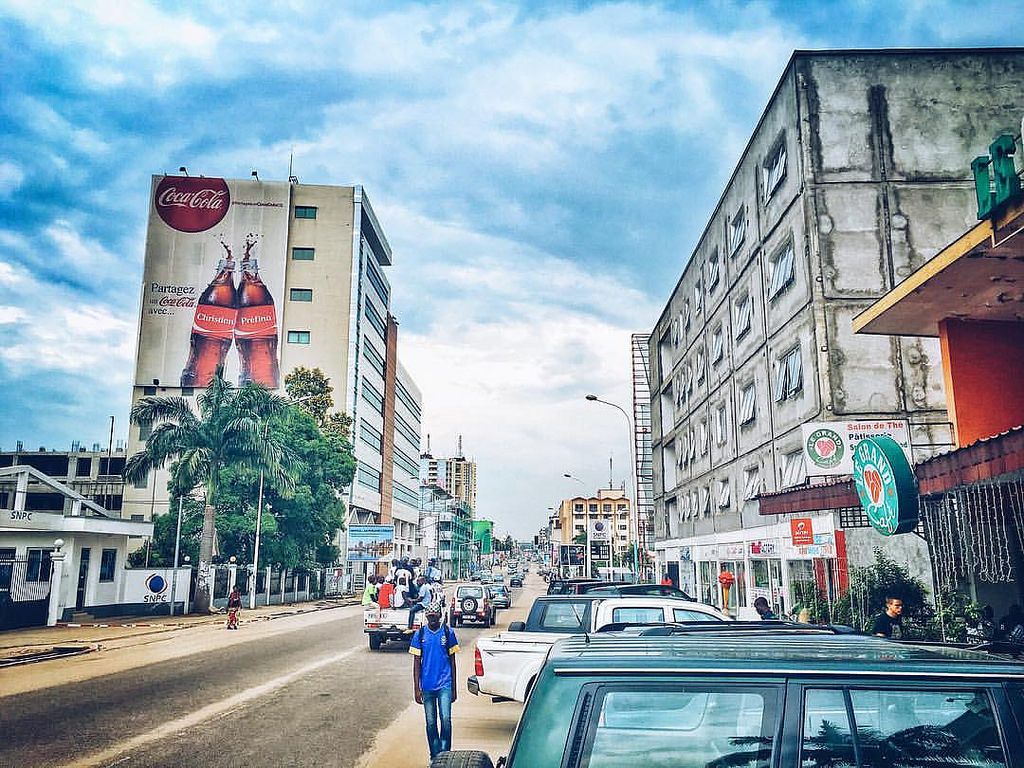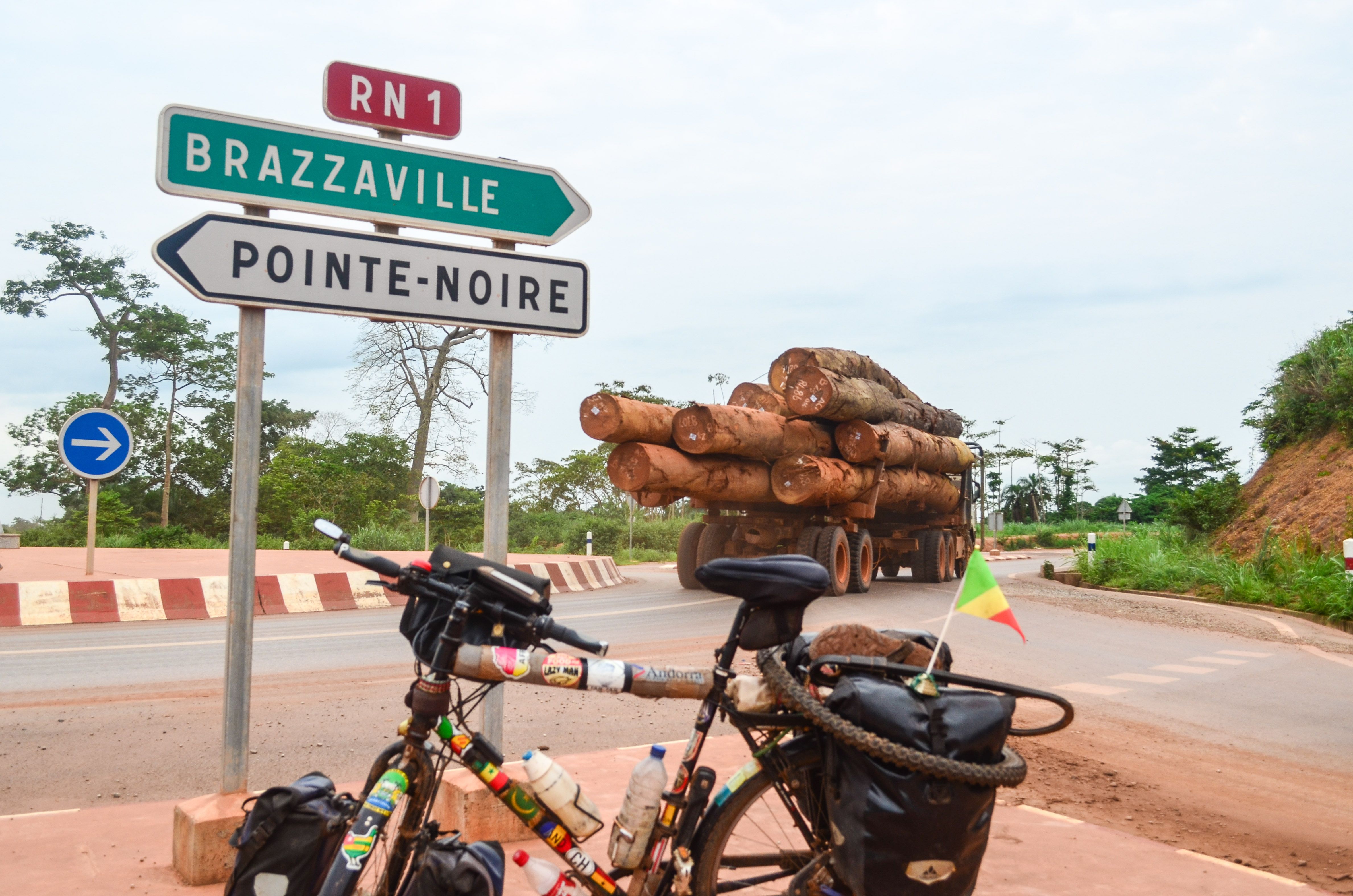Pointe-Noire: a city where fact and fiction collide

The terminus for the Chemin de fer Congo Ocean train that runs between Pointe-Noire and Brazzaville. (Image: David Stanley, CC BY 2.0, via Flickr)
In his novel The Lights of Pointe-Noire, the Congo’s greatest writer Alain Mabanckou describes the Republic of Congo’s second city as a hurly burly of a coastal city with not much indulgence for people arriving with the soil of the fields on their feet.It is a city influenced by the legacy of French colonial rule, the Marxist-Leninist scientific-socialist state that followed and the countries traditional superstitions.
Pointe-Noire is a wealthy city of painted mansions and successful restaurants. The city escaped the ravages of the civil war to become the economic hub of the country. It’s a city of tower blocks, paved streets and more clubs than the rest of the country combined.
The bustling coastal city is divided into two very distinct quarters. The European Quarter, home to the large expat community working in the oil industry, and the La Cite, the African Quarter.
La Cite is busy, crowded and best navigated on foot. Visit the Grande Marche market and enjoy the hum and hustle and sounds of Africa. Or just to enjoy traditional food from across Africa. Or visit the beach favoured by the African population of the city, Cote Mondaine. Less developed than the “European” beach – Cote Sauvage you can hire a boat from the city yacht club from the harbour or enjoy a drink and meal at one of the few decent beach side restaurants.
If, what you really want, is a secluded beach to enjoy your holiday beach read, head out to Pointe Indienne, an hour north of the city centre. It is a quiet white sandy beach with bungalows to rent and no crowds and offers the region’s best fishing or just relax and recline away from the whisk and the whirl of Pointe-Noire.

Pointe-Noire has grown into the economic heart of Republic of Congo (Image: Kaysha, CC BY 2.0, via Flickr)
Further up the coast are two of the city’s better known tourist attractions. The Diosso Gorge and the Museum of Diosso. You will find the Gorge as the road from Pointe-Noire ends. Its rich red canyons overlooking a lush tropical forest. There is, strangely, a championship quality golf course on a plateau overlooking Diosso Gorge.
Pointe-Noire was, in days gone by, the end of a slave caravan route, and it’s estimated that between 1, 5 and 5 million Africans were shipped from the port to Europe and the Americas. The Museum of Diosso’s permanent exhibition includes pieces from the city of Nantes, a French port that grew wealthy on the people trafficked from the port.
Within the boundaries of the city the Jane Goodall Institute operates the Tchimpounga Chimpanzee Rehabilitation Centre, for chimpanzees rescued in the Congo. The Centre is not open to the public, so if you want a wildlife fix you need to leave the city and head out to the Parc National Conkouati-Douli.
The country’s third and most diverse national park stretches from the Atlantic across a coastal savannah and up into mountain habitats of elephant, gorillas and buffalo. Improved security in the park mean the chances of spotting wildlife has improved. Or you can take a boat ride on the Ngongo River or walk in the forest. If you visit between November and February you can watch sea turtles lay eggs on the beach.
Pointe-Noire is awash with new oil money but the city still retains its charm. It is a city where you can play an African version of that omnipresent French pastime, boules, or surf along their Wild Coast. You can enjoy gourmet tea at Villa Madiba or have a MacDo burger at Kactus. So whether you dance the night away at Buddha Bar or search for cloth and batik at Moussa shop Pointe-Noire will find a way to make you want to come back.

Pointe-Noire is hurly burly of a coastal city with not much indulgence for people arriving with the soil of the fields on their feet. (Image: freewheely)


